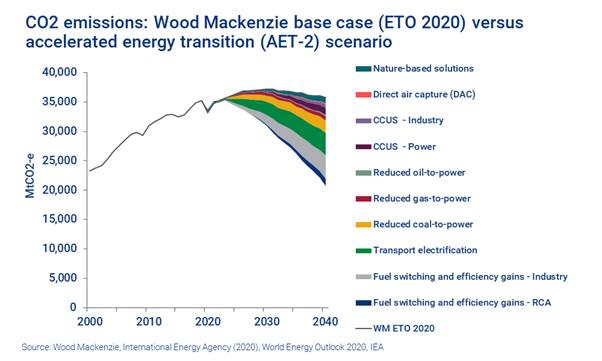Opinion
- As the Chinese proverb goes, “a journey of a thousand miles begins with a single step”.
- And indeed, in the long march to decarbonisation we are still at the early stages.
- The road ahead is long and challenging – a reality reflected in the long-dated targets being set by governments around the world.
The enormity of the challenge is also a reflection of the huge inertia in the system and the significant technological development and innovation required to deliver carbon neutrality. And while the cynic might argue that inertia comes from vested interests keen to maintain the status quo, I believe it simply reflects the scale of the transformation required and the myriad pathways that will have to contribute.
In my last article, I looked at the impact of carbon taxes on costs and prices for mined commodities. This time I take a step farther back and ask: are emissions-related incentives and penalties enough to deliver ambitious net zero targets?
Key drivers on the long and winding road to decarbonisation
Our base case outlook uses our integrated analysis to determine that the most likely pathway is one where the average global temperature rises to three degrees above pre-industrial levels. To limit the average global warming to two degrees above pre-industrial levels (our accelerated energy transition 2-degree or AET-2 scenario), around 17,000 million tonnes of CO2 equivalent (Mt CO2-e) emissions would need to be taken out of the global economy by 2040, compared with 2020 levels. By 2030 the reduction required is ‘only’ 7,500 Mt CO2-e – still a huge target, especially given that on current projections emissions are set to continue to rise until at least 2025.
As the graph above highlights the heavy lifting in terms of carbon reduction will be in: industrial fuel switching and efficiency gains; the electrification of transport; and a reduction in coal-based power production. But can these drivers drive fast enough – are the right policies and incentives in place?
Steel and aluminium decarbonisation aspirations are unlikely to be met
In terms of industrial fuel switching and efficiency gains, steel and aluminium loom large. Together they represent more than 10% of global emissions.
Steel will require a truly monumental shift into hydrogen-based production. This is likely to start with direct reduced iron (DRI) and the adoption of innovations such as Hydrogen Breakthrough Mining Technology (HYBRIT). Greater use of low-carbon energy to fuel scrap processing will also help. The widespread availability of green hydrogen will therefore determine the rate of decarbonisation of steel production. However, the challenge is that the cost of the technological solution to decarbonisation, or carbon abatement cost, is more than US$200 per tonne of CO2-e.
In the case of aluminium, while the use of inert anode technology and low-carbon processing of bauxite will play a part, the most significant carbon reduction will come from the use of low-carbon power. (Undoubtedly, greater recovery and processing of scrap will also play a large role, but only if low-carbon power is available). The costs of carbon abatement for aluminium therefore chiefly relate to long-duration renewables, which are in the range of US$50-150 per tonne of CO2-e.
In short, the rate-determining step in the decarbonisation of steel and aluminium will be the widespread availability of green hydrogen for the former and low carbon power for the latter. Without an alignment between carbon taxes, emissions caps and the cost of abatement, the economics of green steel and aluminium won’t stack up. It will not be possible to sate the decarbonisation aspirations of industry and consumers at the same time.
Electric vehicle hype and reality: do the numbers add up?
When it comes to the electrification of transport, the narrative around electric vehicles (EVs) is a path well-trodden. There seems to be an approach from policymakers, and indeed others in the EV space, that draws from that famous line in the film Field of Dreams: “if you build it they will come”. But there are some significant obstacles to negotiate.
Under our base case, battery EV (BEV), plug-in hybrid (PHEV) and hybrid build and sales reach around 20 million units by 2025, and around 50 million units by 2030. We believe these numbers can be managed by the raw materials supply chain, albeit with some thrifting and innovation. However, some consider these figures to be conservative, particularly those bulls in the market who expect EV sales aligned with a two-degree pathway. So, what would such a scenario look like?
Under an AET-2 pathway, by 2025 EV sales would have to reach around 50 million units, and by 2030 around 85 million units. However, the key question is not whether enough EV manufacturing capacity can be put in place, nor even whether battery production facilities can be ramped up fast enough, but rather, can the mining industry deliver the tonnage?
My considered opinion is unequivocal: the numbers simply don’t add up in terms of the scale and speed of the buildout of mine supply required and processing capacity needed to deliver on a two-degree pathway.
Are decarbonisation sticks and carrots aligned?
To give decarbonisation the momentum it needs, the carrots and sticks of carbon policy must be aligned. A cursory glance at current emissions trading scheme carbon prices highlights the problem, as you can see from the chart below. Put simply, carbon emissions are too cheap to buy and emissions trading schemes do not have enough coverage.
Author: Julian Kettle’s
Source: Woodmac
















